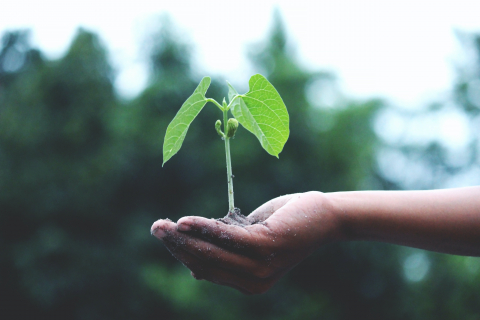East Midlands among the top 5 most sustainable regions in the UK

The UK has been on a high speed to reach its Net-Zero goal by 2050. The country has committed to cut carbon emissions by 78% by 2035 and reach full-carbon free energy production by 2050.
In 2020, the UK generated 43% of its electricity from renewable sources. There is still a long way to go and some regions have done better than others in improving their sustainability and reducing their environmental impact. In this article we will find out which are the top 5 most sustainable regions in the UK.
Which regions produce the most renewable energy in the UK?
Renewable energy is one of the key elements in pushing the UK towards its green goal. According to a study from the Department of Business, Energy, and Industrial Strategy data, there are 871,608 renewable energy sites across the UK that produce green energy. From these sites, solar energy is the most widely available source of energy production, which generates the most renewable energy at the moment. In fact, the largest green energy source is the solar panels installed in homes which are around 1.5 million across the UK.
To rank the top 5 regions for renewable energy production, we will look into how many clean energy sources are available per 1000 households in each of the regions. The data shows that the South West region holds the first place with 123 804 renewable energy sites. It is followed by South East with 114 336, East of England with 106,262, East Midlands has 88,152 sites and lastly North West region with 85,749. See the graph here.
Rank: 1
Region: South West
Number of renewable energy sites: 123,804
Rank: 2
Region: South East
Number of renewable energy sites: 114,336
Rank: 3
Region: East of England
Number of renewable energy sites: 106,262
Rank: 4
Region: East Midlands
Number of renewable energy sites: 88,152
Rank: 5
Region: North West
Number of renewable energy sites: 85,749
How is renewable energy produced in the East Midlands region?
The East Midlands is top for anaerobic digestion electricity generation among all regions in England and Wales. The region also meets a relatively high percentage of its gas consumption from renewable heat generation, compared to other parts of the country. In the year from 2015 to 2016, the region has had the fastest growth in onshore wind capacity, compared to other regions. It also boasts a lot of solar PV installations.
Nottingham holds the first place in most renewable energy sources of the whole region with 6,335 sources installed.
How is green energy produced?
Although solar energy is the most widely available source of renewable energy generation, there are other ways to produce green energy. Each one uses a different technology, which we explain below:
Solar:
Solar energy is a sustainable source of energy that comes directly from the Sun. The Sun produces energy via nuclear fusion, which happens when smaller atoms are fused together by heat and pressure to create heavier atoms. The energy produced reaches the Earth via solar radiation, which we then convert into electricity. Solar energy is used to power up any type of device, even electric cars. Some people that have installed solar energy sites can even sell it back to the national grid.
Wind:
Wind energy is generated when the wind blows past a turbine. At that moment the kinetic energy is converted into mechanical energy and then a generator turns it into electricity. You might think that there has to be a wind storm to generate electricity, however, even on less windy days this method is very effective. The wind farms are usually outside of the cities, and in areas with more wind. You can often see them in large green spaces next to highways.
Hydropower:
Hydropower is energy generated from running water, such as in a river. There is a constant water cycle in the earth, which involves evaporation from beds of water that form clouds, and then transformers into rain. This water is then incorporated back into the ocean. This water cycle generates kinetic energy that is used to produce renewable energy.
Geothermal energy:
Geothermal energy is the energy that is generated from the subsurface Earth. A lot of energy is contained in the rocks that lie underneath the surface of the Earth. To get into them, people have to dig big holes in the Earth and build turbines that are used to convert kinetic energy into electricity through a generator. Geothermal energy is created in over 20 countries, and Iceland is a top producer of it.
Bioenergy:
Bioenergy generates energy from the decomposition of organic matter. The way it works is that the remains of harvests and crops are utilised. It creates a lot of heat and methane and, instead of wasting this resource, bioenergy taps into it and converts it into sustainable electricity.
Written by Chloe from Papernest
